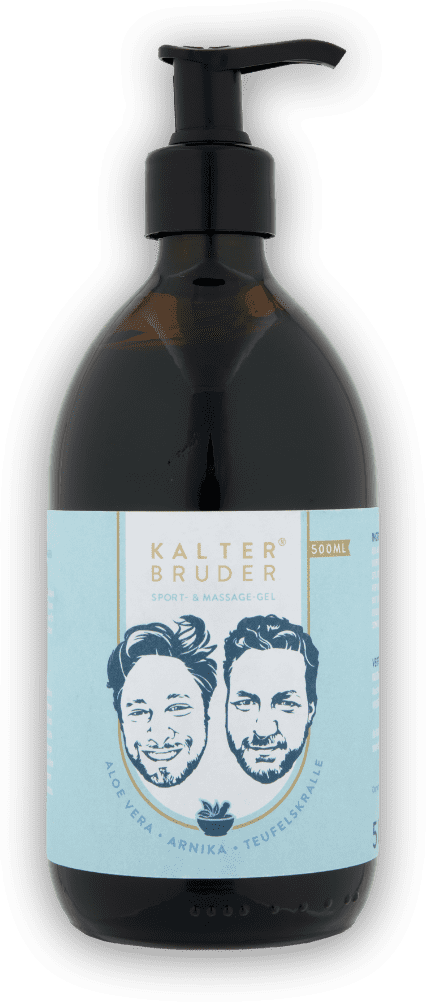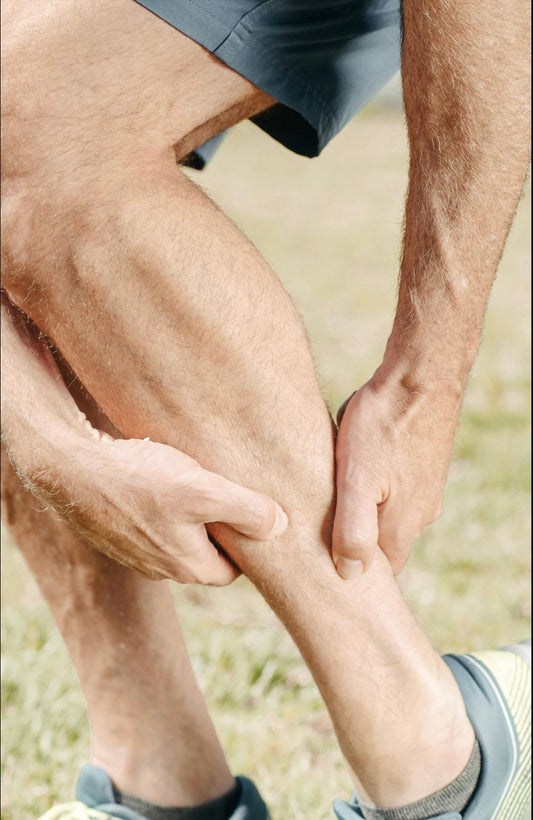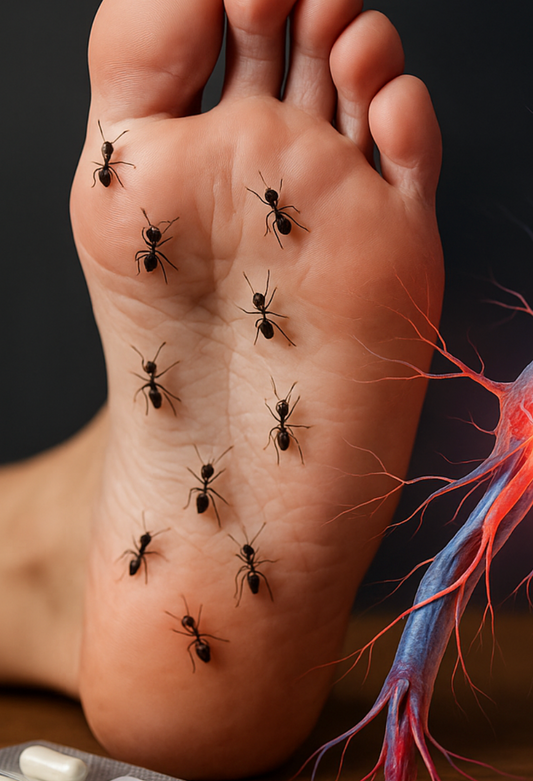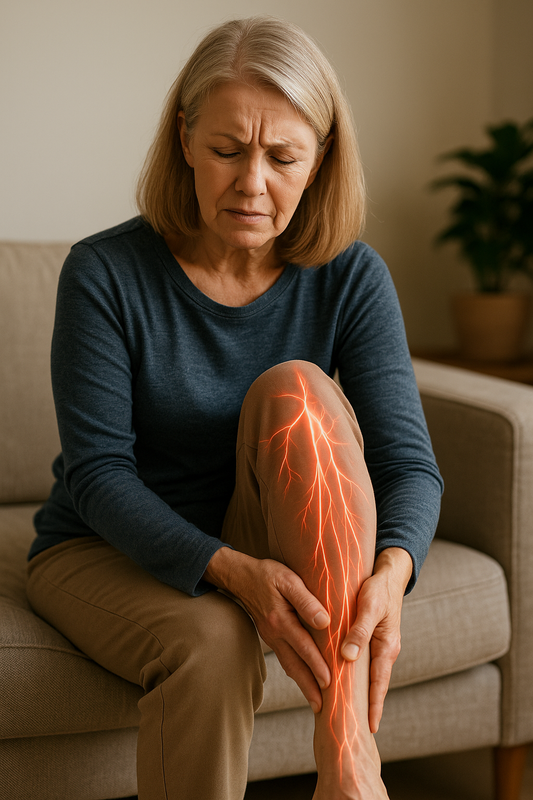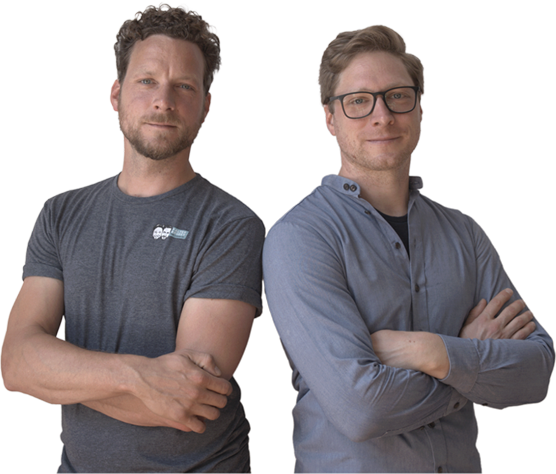Osteopathy for restless legs and polyneuropathy – How targeted hand movements can really help you
You know the feeling: the nights are long and restless, your legs just can't get any rest, and your nerves seem to be constantly on edge. For many people who live with restless legs or polyneuropathy, this is exactly what everyday life is like. But what if there was a way to relieve these symptoms without medication? The answer could lie in osteopathy, a gentle but effective treatment method that is becoming increasingly popular.
Osteopathy works with your self-healing powers. Targeted hand movements release tension, remove blockages and promote blood circulation. The goal: to bring your body back into balance and relieve the symptoms that make your life difficult.
International Trend
Did you know that osteopathy is still relatively new in Germany, but has long been a recognized therapeutic method in countries such as France and Great Britain? In France, most health insurance companies cover the costs of osteopathic treatments, and in Great Britain, osteopathy is considered an independent medical discipline that is on an equal footing with conventional medicine. This international recognition speaks for the effectiveness and the positive experiences that many patients around the world have had with this method.
Osteopathy for Restless Legs & Polyneuropathy
Osteopathy as a treatment method is gaining increasing recognition in the medical world, including for restless legs syndrome (RLS) and polyneuropathy. A 2017 study published in the Journal of Clinical Medicine Research examined the effectiveness of osteopathy in 60 RLS patients. The study showed that after six osteopathic sessions, nighttime symptoms decreased by an average of 40%. What was particularly remarkable was that this improvement continued even months after the treatment.
Another study from 2020, published in the Journal of Neurological Sciences , examined the effect of osteopathic techniques on polyneuropathy patients. Here, 85 sufferers were treated and the results showed a significant improvement in nerve conduction as well as a reduction in pain intensity and increased mobility in the patients.
These results are not isolated cases. Many sufferers report a reduction in symptoms and an improvement in their quality of life after regular osteopathic sessions. The improvement in blood circulation and the relief of the nerve pathways are often perceived as particularly beneficial.
What happens during an osteopathic session?
An osteopathic treatment always begins with a detailed conversation. Your osteopath wants to know exactly where your problems are and how they manifest themselves. He then carefully examines your body to find tension and blockages. The entire body is often examined, even if the problems may only be in the legs or feet. Osteopaths work according to the principle that all systems in the body are connected.
During the actual treatment, various techniques are used:
- Mobilization: This involves improving the mobility of the joints through gentle movements.
- Manipulation: Small, targeted impulses intended to release blockages in the joints.
- Soft tissue techniques: massages and stretches that loosen tense muscles and fascia.
The treatments are usually painless and are often perceived as very pleasant. These techniques can promote blood circulation and improve nerve conduction - crucial factors if you suffer from RLS or polyneuropathy.

Which German health insurance companies cover the costs?
If you are thinking about having osteopathic treatment, the question often arises: who will cover the costs? In Germany, the reimbursement of costs by health insurance companies is regulated differently, depending on the insurer and the tariff. Many statutory health insurance companies reimburse part of the costs for osteopathic treatments. The amount of reimbursement varies depending on the insurer, but is often around 30 to 80% of the costs, up to a certain maximum amount per year (usually between 150 and 360 euros). A doctor's prescription and treatment by an osteopath recognized by the insurer are often required. Private insurance companies often cover a larger part of the costs or even the entire cost, depending on the tariff taken out. Here, too, it can be important that the osteopath can prove certain qualifications.
|
health insurance company |
Private/Statutory |
offers for alternative medicine |
tariff |
|
Technicians' Health Insurance |
Legally |
Yes |
Up to 360 € annually |
|
Barmer GEK |
Legally |
Yes |
Up to 200 € annually |
|
AOK Baden-Württemberg |
Legally |
Yes |
Up to 150 € annually |
|
DAK Gesundheit |
Legally |
Yes |
Up to 160 € annually |
|
BKK VBU |
Legally |
Yes |
Up to 300 € annually |
|
Allianz Private Health Insurance |
Private |
Yes |
Depending on the tariff |
|
Debeka |
Private |
Yes |
Depending on the tariff |
It is therefore worth asking your health insurance provider to check whether and to what extent osteopathic treatments are covered. Please note that a doctor's prescription is often required and the treatments can only be carried out by recognized osteopaths.
How do I find the right osteopath?
Finding qualified osteopaths is crucial to ensure you receive high quality and effective treatment. Here are some tips on how to find a qualified osteopath:
- Check the training and certification
- Completed training : A qualified osteopath should have completed several years of training at a recognized school or university. The training usually includes at least 1,350 hours of theory and practice.
- Membership in professional associations : Osteopaths who are members of recognized professional associations such as the Association of Osteopaths Germany (VOD) or the Federal Association of Osteopathy (BAO) generally meet high training standards. These associations set strict criteria for membership, which ensure that osteopaths are well trained and regularly attend further training courses.
- License to practice as an alternative practitioner : In Germany, osteopaths are only allowed to practice if they have a license to practice as an alternative practitioner or a medical license.
- Get recommendations
- Ask your doctor or alternative practitioner : Your family doctor or alternative practitioner can often recommend qualified osteopaths in your area.
- Testimonials : Ask your friends or acquaintances about their experiences with osteopaths. Personal recommendations are often very valuable because they are based on real experiences.
- Use online directories
- There are several online directories where you can search for qualified osteopaths:
- Association of Osteopaths Germany (VOD) : The VOD offers an online search where you can search for qualified osteopaths by postcode or location. VOD Find Osteopaths
- Professional Association for Osteopathy Practiced in Medicine (bvo) : Here you will also find a directory of certified osteopaths.
- Questioning qualifications and training
- Don't be afraid to ask the osteopath directly about his training, further education and experience. A qualified osteopath will be happy to give you information about this.
- use initial consultation
- An initial consultation or session is a good opportunity to get to know the osteopath and his methods. Pay attention to whether the osteopath takes enough time for you, answers your questions and makes you feel like you are in good hands.
- Pay attention to recognition by health insurance companies
- Many statutory health insurance companies only reimburse osteopathic treatments if they are carried out by recognized osteopaths. This recognition can be a further indication of the osteopath's qualifications. Ask your health insurance company what requirements must be met.
- By taking these steps, you can ensure that you find a qualified osteopath who can help you relieve your symptoms and improve your quality of life.
Conclusion
Osteopathy can be a valuable addition to help relieve the symptoms of restless legs and polyneuropathy. The gentle, targeted manipulation helps your body heal itself without the use of medication. So if you are looking for an alternative or complementary treatment, osteopathy could be just the thing for you. Talk to your doctor and work with a qualified osteopath to find out how this form of therapy can help you regain your sense of wellbeing.





